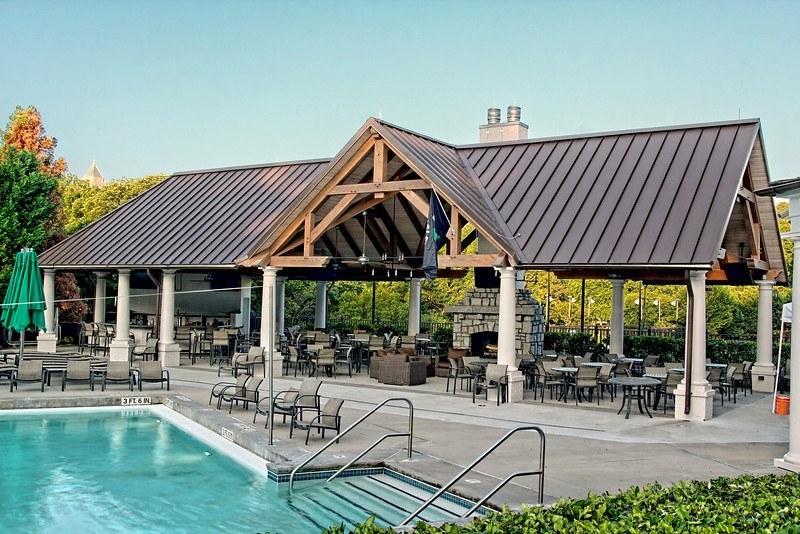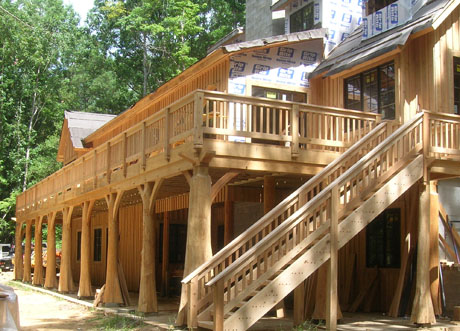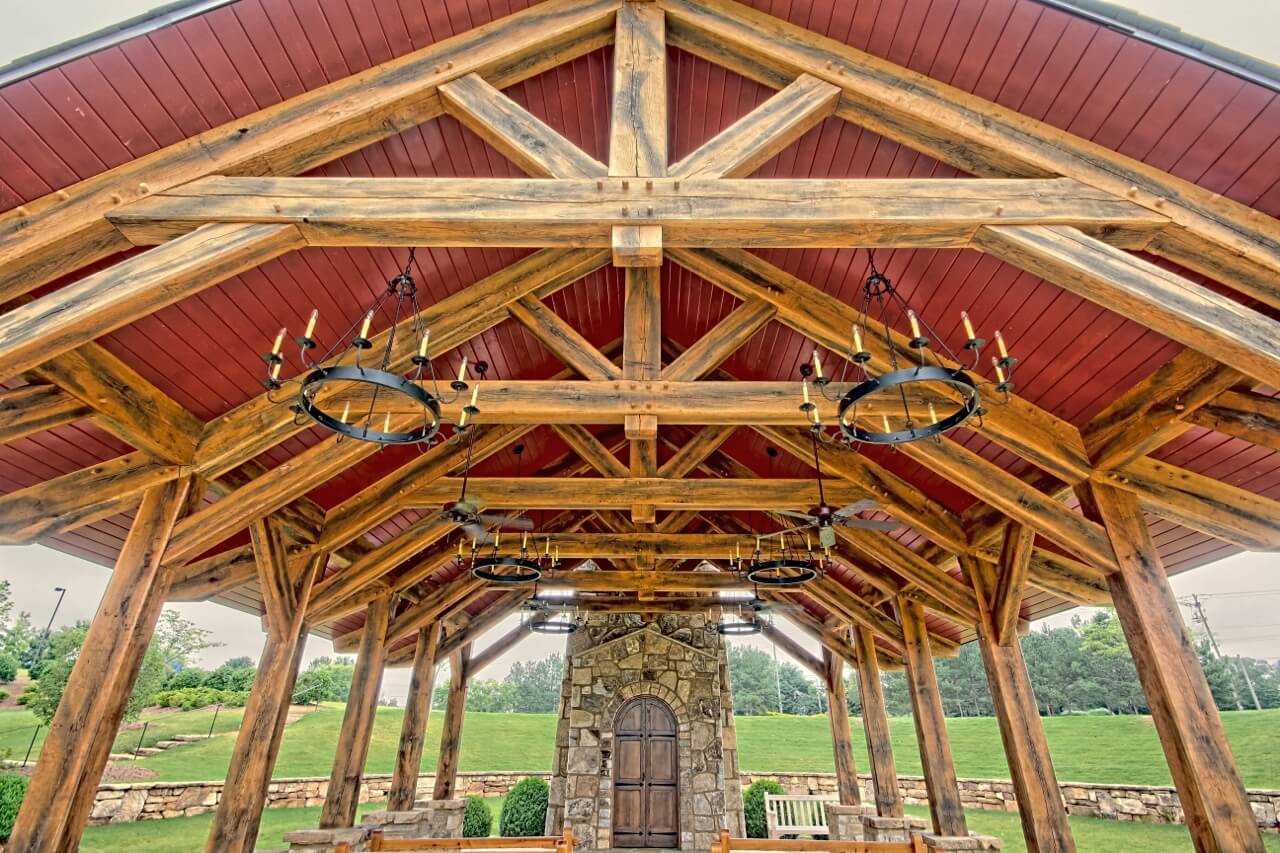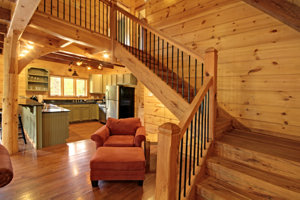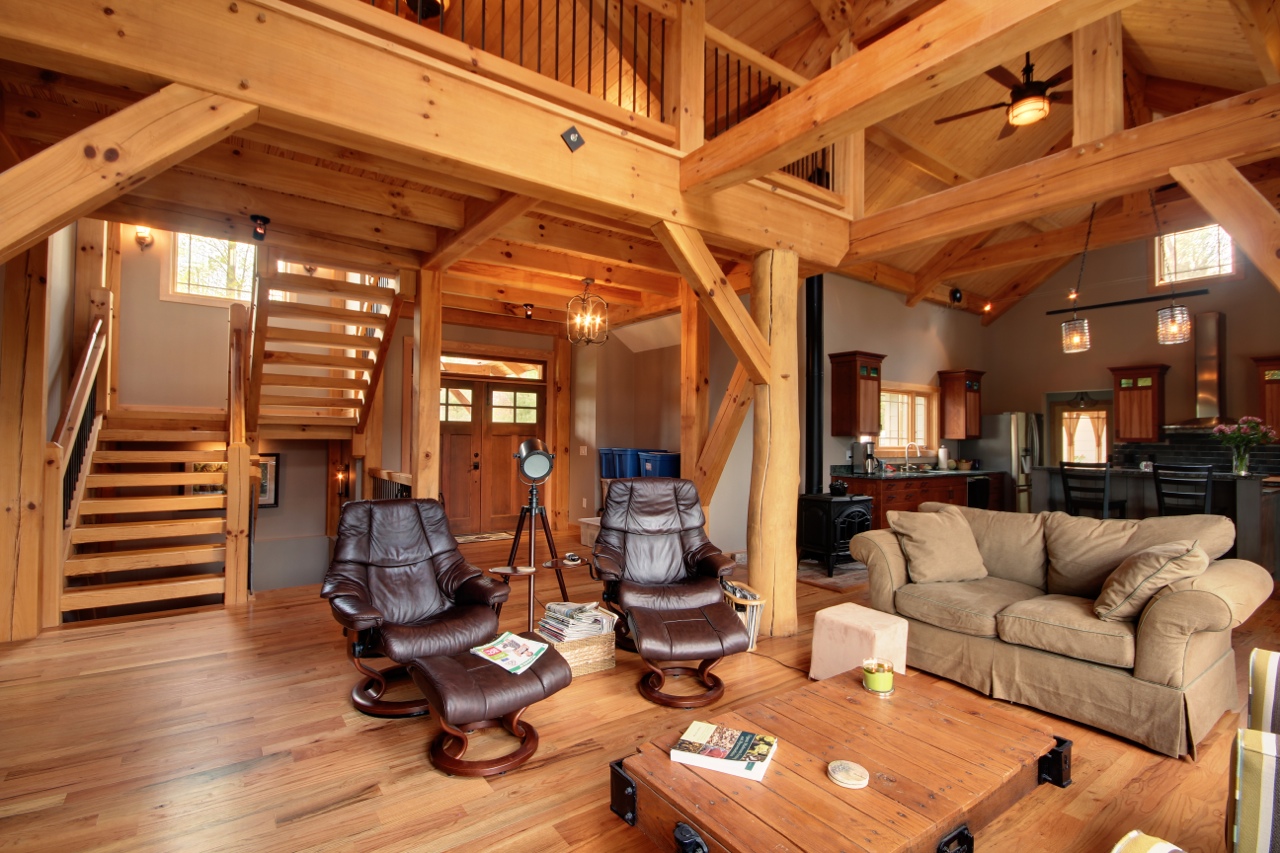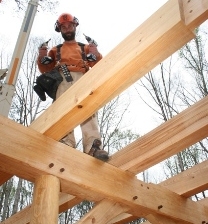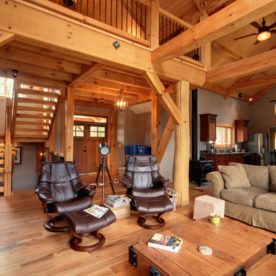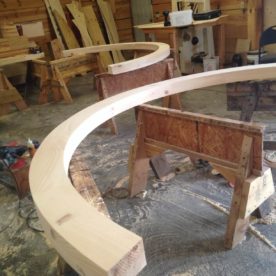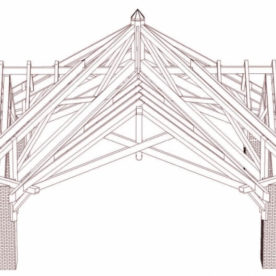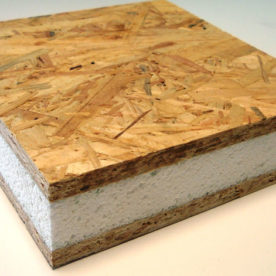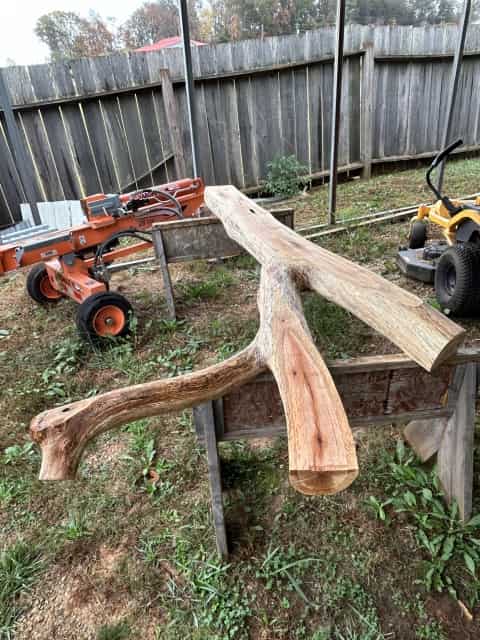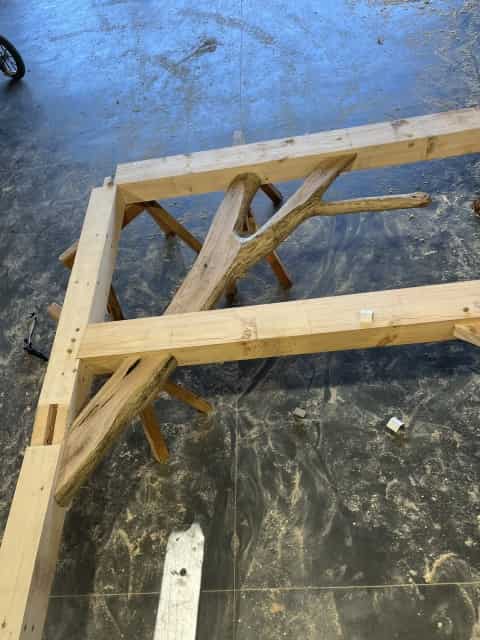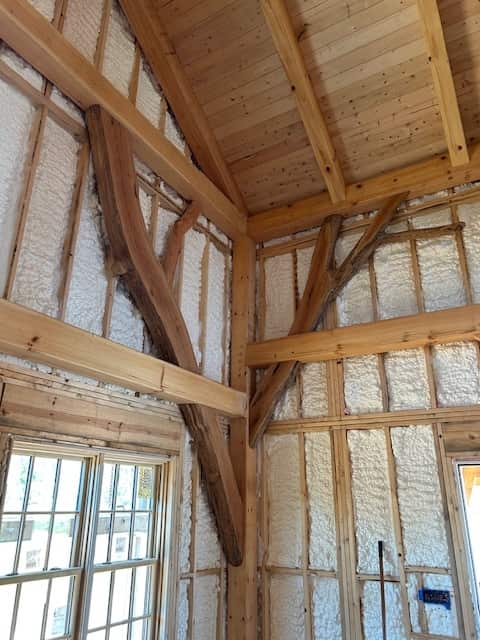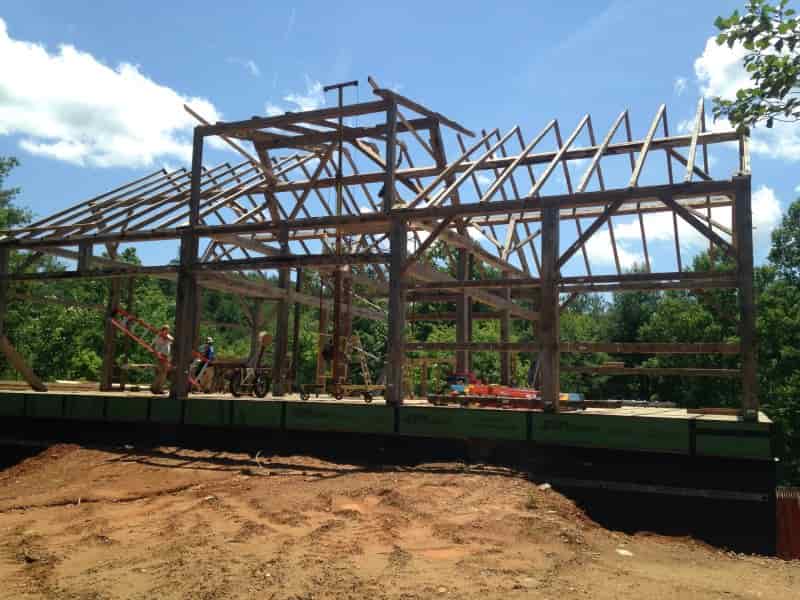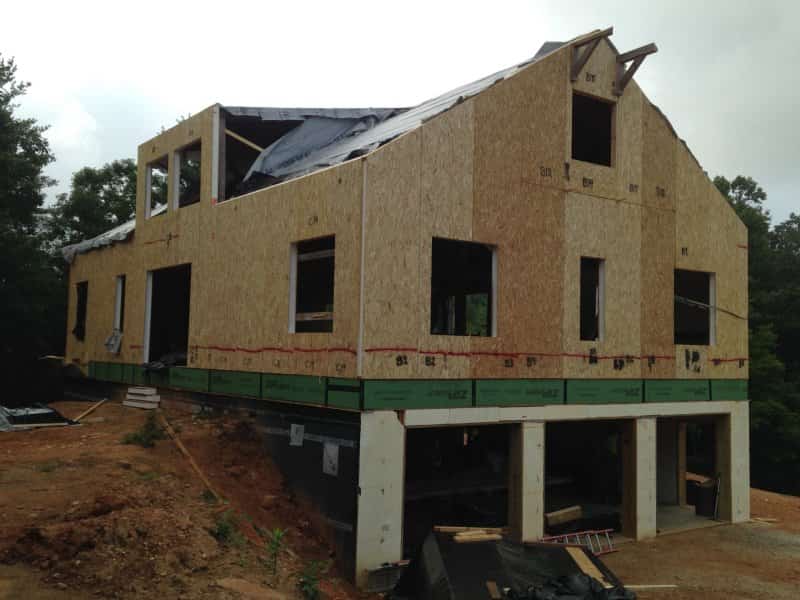The most commonly used wood in timber frames are listed below with a description of their characteristics and benefits. The cost of material varies between timber species. Availability, sustainability and suitability, as well as aesthetics, are other factors to consider in choosing your wood. Different finishing options are available to complement your style. In some cases timber can be used that has been harvested from your property to create a special feature in your timber frame.
Common Timber Species
Douglas Fir (DF)
Known for its structural strength Douglas Fir ranges in color from an orange tinted yellow to reddish brown. This timber species usually has minimal shrinkage which means less cracks and checks when it dries. The grain pattern is straight and consistent and this is an ideal choice for structural support.
Cypress (CY)
Cypress tends to be golden to reddish brown and has fairly straight grain. This wood is extremely durable and strong. Cypress posts can be left in their natural shape in some applications for an especially interesting effect. This wood is highly resistant to decay and is typically used for beams, posts and porches.
Eastern White Pine (EWP)
Low shrinkage, minimal cracks and twists are some of the benefits of using Eastern White Pine. The wood is an attractive honey color and gets some interest from knots. White Pine is susceptible to a fungus called Blue Stain that is structurally harmless and can cause blue striations in the timbers, making the wood sought after by many people. While steps are taken by the timber suppliers to avoid this, the possibility of it occurring cannot be avoided and should be considered when making your decision on what species to use.
White Oak (WO)
Resistance to decay is one of White Oak’s best traits, but this wood has a high shrinkage rate and is very hard which makes it more difficult to work with. These characteristics will undoubtedly result in gaps appearing at joints in the frame, which has a visual impact but is not a structural concern. The sapwood of White Oak is light in color and the heartwood is light to dark brown. Oak timbers have more grain and fewer knots than pine and can be smaller in size to carry a comparable load.
Southern Yellow Pine (SYP)
This timber species is an abundant and renewable resource and readily available. It has an appealing golden color and a distinct grain pattern. The strength of Southern Yellow Pine can vary by species and this should be discussed.
Poplar (POP)
Less commonly used due to its low density, Poplar is used mostly in furniture and cabinetry. It is readily available in the eastern United States and therefore an economical and viable option. Often a tree found on home sites, Poplar can be used for interesting natural timbers in a frame.
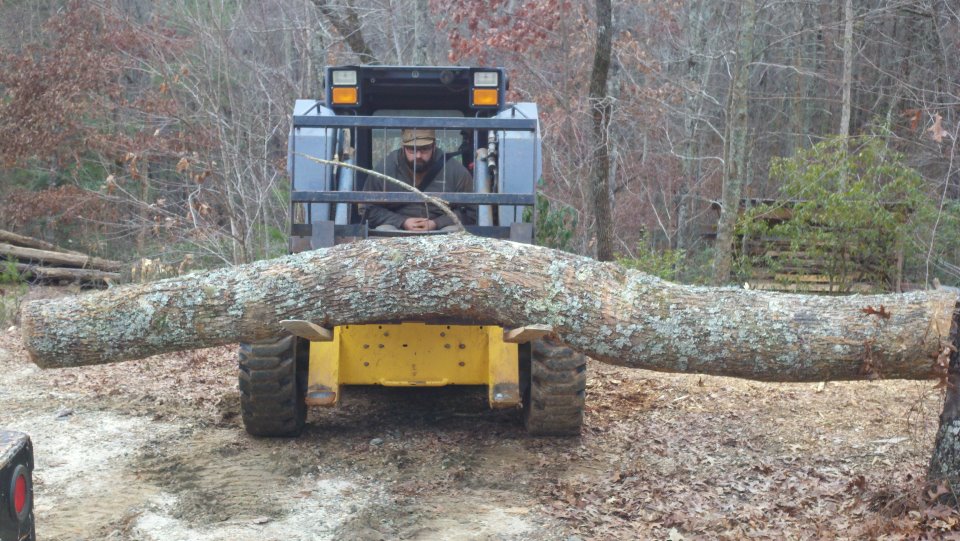
Poplar tree from timber frame home site
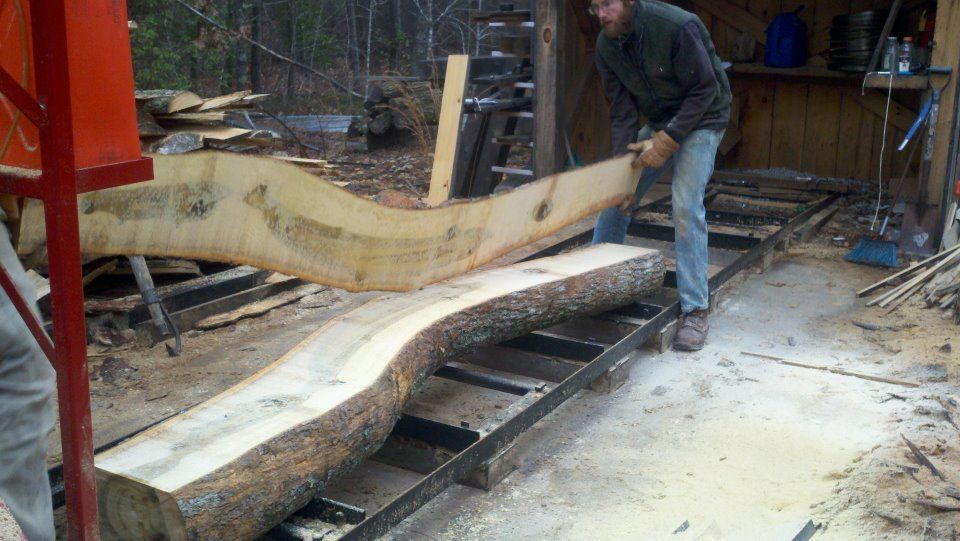
Cutting the tree at the sawmill
More Information:

Southern Yellow Pine






